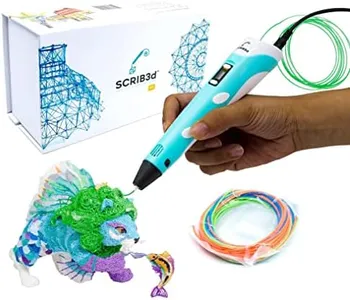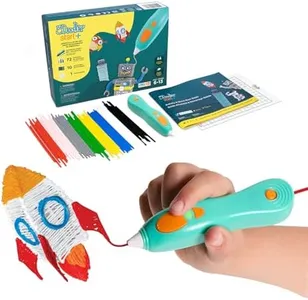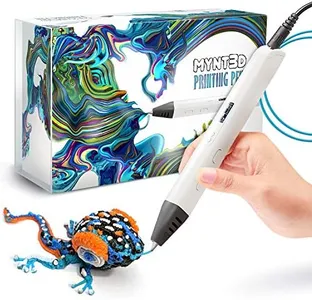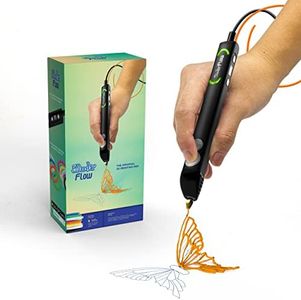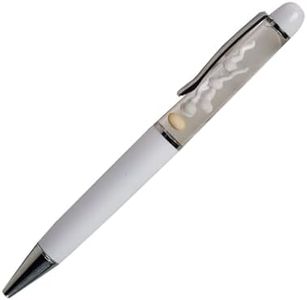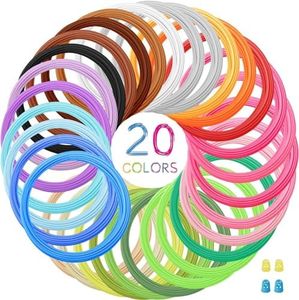We Use CookiesWe use cookies to enhance the security, performance,
functionality and for analytical and promotional activities. By continuing to browse this site you
are agreeing to our privacy policy
7 Best 3D Pens
From leading brands and best sellers available on the web.Buying Guide for the Best 3D Pens
Choosing a 3D pen can be a fun and creative process since these tools let you draw physical objects in mid-air. To find the right fit for you, it's important to think about who will use it (adults, kids, beginners, or hobbyists), what kind of projects you want to create, and how much flexibility or precision you need. By examining the main features and understanding what each one means, you’ll be better equipped to select a pen that matches your creative goals.Filament Type CompatibilityFilament type determines what kind of plastic a 3D pen can use, usually either PLA, ABS, or PCL. Each filament has different melting points and properties. PLA is eco-friendly and easy to use, making it great for beginners and kids, while ABS is more durable and suited for more advanced or robust projects. PCL melts at a lower temperature, making it even safer for children. When choosing, think about your age group and intended projects. Beginners and young users may prefer pens that are compatible with PLA or PCL, while more experienced users might opt for ABS compatibility for stronger results.
Temperature ControlTemperature control allows you to adjust how hot the pen gets to melt the filament. Some pens come with fixed temperatures, which are simple to use but only work with certain filaments, while others offer adjustable settings for more versatility. If you plan on using a variety of filaments, a pen with adjustable temperature is a smart choice. For simple usage, especially for kids, fixed temperature pens are safe and easy to operate.
Speed ControlSpeed control lets you manage how quickly the plastic extrudes from the pen. Pens often have either a single speed or multiple speed settings. A slower speed allows for more precise and detailed drawing, while a faster speed helps fill in larger areas quickly. If you're focused on detailed art or are a beginner getting comfortable with the process, a pen with adjustable speed gives you better control. For quick, less intricate work, a single-speed pen can be sufficient.
Pen Thickness and ErgonomicsThe design and thickness of the pen affect how comfortable it is to hold for longer periods. Thinner, lightweight pens are easier for children and beginners to manage, whereas adults with larger hands might find a thicker pen more comfortable. Test how the pen feels in your hand if possible, and think about who will be using it most. Comfort becomes especially important for detailed or lengthy projects.
Nozzle SizeNozzle size determines how fine or broad the lines created by the pen will be. Smaller nozzles create more precise and delicate lines, ideal for detailed artwork, while larger nozzles are better for creating stronger, chunkier structures quickly. Consider what kind of work you want to do most: for fine, intricate models, prefer a pen with a smaller nozzle; for larger builds, a bigger nozzle can save time.
Safety FeaturesMany 3D pens now offer safety features, like auto shut-off, low-temperature tips, or heat-resistant materials. These features are essential, especially if children will use the pen. If safety is a priority, look for pens advertised as having protective tips and auto-sleep functions to prevent accidents.
